Related Research Articles
Kuwait is a sovereign state in Western Asia located at the head of the Persian Gulf. The geographical region of Kuwait has been occupied by humans since antiquity, particularly due to its strategic location at the head of the Persian Gulf. In the pre-oil era, Kuwait was a regional trade port. In the modern era, Kuwait is best known for the Gulf War (1990–1991).
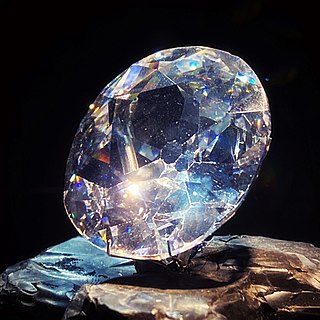
The Koh-i-Noor, also spelt Koh-e-Noor, Kohinoor and Koh-i-Nur, is one of the largest cut diamonds in the world, weighing 105.6 carats (21.12 g). It is part of the Crown Jewels of the United Kingdom. The diamond is currently set in the Crown of Queen Elizabeth The Queen Mother.

The Persian Gulf, sometimes called the Arabian Gulf, is a mediterranean sea in West Asia. The body of water is an extension of the Indian Ocean located between Iran and the Arabian Peninsula. It is connected to the Gulf of Oman in the east by the Strait of Hormuz. The Shatt al-Arab river delta forms the northwest shoreline.

The Hope Diamond is a 45.52 carats diamond that has been famed for its great size since the 18th century. Extracted in the 17th century from the Kollur Mine in Guntur, India, the Hope Diamond is a blue diamond. Its exceptional size has revealed new information about the formation of diamonds.

Kuwait City is the capital and largest city of Kuwait. Located at the heart of the country on the south shore of Kuwait Bay on the Arabian Gulf, it is the political, cultural and economic center of the emirate, containing Kuwait's Seif Palace, government offices, and the headquarters of most Kuwaiti corporations and banks.

The Gulf War was an armed conflict between Iraq and a 42-country coalition led by the United States. The coalition's efforts against Iraq were carried out in two key phases: Operation Desert Shield, which marked the military buildup from August 1990 to January 1991; and Operation Desert Storm, which began with the aerial bombing campaign against Iraq on 17 January 1991 and came to a close with the American-led liberation of Kuwait on 28 February 1991.

Dhow is the generic name of a number of traditional sailing vessels with one or more masts with settee or sometimes lateen sails, used in the Red Sea and Indian Ocean region. Typically sporting long thin hulls, dhows are trading vessels primarily used to carry heavy items, such as fruit, fresh water, or other heavy merchandise, along the coasts of Eastern Arabia, Iran, East Africa, Yemen and coastal South Asia. Larger dhows have crews of approximately thirty and smaller ones typically around twelve.

The Peacock Throne was the imperial throne of Hindustan. The throne is named after the dancing peacocks at its rear and was the seat of the Mughal emperors of India from 1635 to 1739. It was commissioned in the early 17th century by Emperor Shah Jahan and was located in the Diwan-i-Khas in the Red Fort of Delhi. The original throne was taken as a war trophy by Nader Shah, Shah of Iran in 1739 after his invasion of India. Its replacement disappeared during or soon after the Indian Rebellion of 1857.

Pearl hunting, also known as pearl fishing or pearling, is the activity of recovering or attempting to recover pearls from wild molluscs, usually oysters or mussels, in the sea or freshwater. Pearl hunting was prevalent in the Persian Gulf region and Japan for thousands of years. On the northern and north-western coast of Western Australia pearl diving began in the 1850s, and started in the Torres Strait Islands in the 1860s, where the term also covers diving for nacre or mother of pearl found in what were known as pearl shells.

Failaka Island is a Kuwaiti Island in the Persian Gulf. The island is 20 km off the coast of Kuwait City in the Persian Gulf. The name "Failaka" is thought to be derived from the ancient Greek φυλάκιο(ν) – fylakio(n) "outpost".

Zubarah, also referred to as Al Zubarah or Az Zubarah, is a ruined, ancient town located on the northwestern coast of the Qatar peninsula in the Al Shamal municipality, about 65 miles or 105 kilometres from the capital Doha. It was founded by Shaikh Muhammed bin Khalifa, the founder father of Al Khalifa royal family of Bahrain, the principal Utub tribe in the first half of the eighteenth century. It was designated a UNESCO World Heritage Site in 2013.
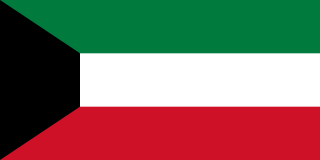
Kuwait, officially the State of Kuwait, is a country in West Asia. It is situated in the northern edge of the Arabian Peninsula at the tip of the Persian Gulf, bordering Iraq to the north and Saudi Arabia to the south. With a coastline of approximately 500 km (311 mi), Kuwait also shares a maritime border with Iran, across the Persian Gulf. Most of the country's population reside in the urban agglomeration of Kuwait City, the capital and largest city. As of 2024, Kuwait has a population of 4.82 million, of which 1.53 million are Kuwaiti citizens while the remaining 3.29 million are foreign nationals from over 100 countries. Kuwait has the third largest foreign-born population in the world.

The Sheikhdom of Kuwait was a sheikhdom during the pre-oil era. The sheikhdom became a British protectorate between 1899 and 1961 following the Anglo-Kuwaiti agreement of 1899. This agreement was made between Sheikh Mubarak Al-Sabah and the British Government in India, primarily as a defensive measure against threats from the Ottoman Empire. After 1961, the sheikdom became the state of Kuwait.
Huwala also collectively referred to as Bani Huwala, is a blanket term usually used to refer to Iranian Arabs of tribal lineage who initially migrated to Iran in the 13th and 14th century and intermixed with the indigenous population of older Arabic-speaking background. Such migrations continued till around 19th century to the area which is now Iran's Hormozgan Province and Fars Province, mainly Bandar Abbas, Qishm, and the mainland near Bandar Lengeh. The Huwala follows Sunni Islam, as opposed the majority Persian Twelver Shia and similar to Sunni Peninsular Arabs. Most of the Huwala have remigrated back to the Arabian Peninsula between late 19th century and early 20th century. The imposition of restrictive economic policies by Reza Shah in the 1930s led to the migration of most of the Huwala back to the Arabian Peninsula.
Cindy Chao is a Taiwanese jewellery designer. She founded her company, Cindy Chao The Art Jewel, in 2004. She is known for her Black Label Masterpiece Collection and Annual Butterfly.
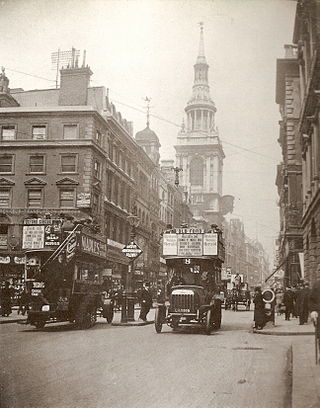
The Cheapside Hoard is a hoard of jewellery from the late 16th and early 17th centuries, discovered in 1912 by workmen using a pickaxe to excavate in a cellar at 30–32 Cheapside in London, on the corner with Friday Street. They found a buried wooden box containing more than 400 pieces of Elizabethan and Jacobean jewellery, including rings, brooches and chains, with bright coloured gemstones and enamelled gold settings, together with toadstones, cameos, scent bottles, fan holders, crystal tankards and a salt cellar.
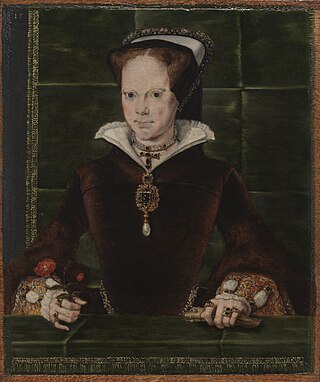
The Mary Tudor pearl or simply The Tudor pearl is an asymmetrical drop-shaped pearl featured in at least three portraits of Queen Mary I of England and estimated to be 64.5 carats, 258 grains in weight and dated to 1526. It is often mistakenly depicted as the La Peregrina pearl, however, Mary Tudor could never have worn the Peregrina as it was first recorded in 1579, 21 years after her death.
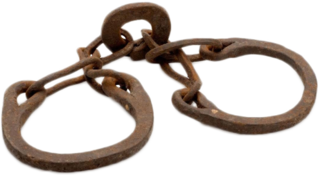
Open chattel slavery existed in Kuwait until 1949. Slavery was formally abolished in Kuwait in 1949. In practice, slavery was not actually abolished as such, but the law no longer recognized it after 1949, which meant that every slave who applied for manumission was guaranteered to be freed.

Open slavery existed in Bahrain until the 1930s. Slavery was formally abolished in Bahrain in 1937. Slavery ended earlier in Bahrain than in any other Gulf state, with the exception of Iran and Iraq. Many members of the Afro-Arabian minority are descendants of the former slaves. Slavery of people from Africa and East Asia was succeeded by the modern Kafala system of poor workers from the same region were slaves had previously been imported.
References
- ↑ Chadour-Sampson, Beatriz with Hubert Bari (2013). Pearls. London: Victoria & Albert Museum. pp. 72–73. ISBN 978-1-85177-755-6
- ↑ "What a pearl". The Economist. 28 June 2013. Retrieved 29 October 2018.
- ↑ "Smithsonian exhibit statement". Smithsonian. Retrieved 4 May 2018.